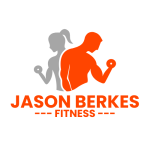Flexibility is the cornerstone of optimal physical function, empowering individuals to move with ease, grace and precision. Advanced stretching techniques offer a gateway to enhanced flexibility, improved range of motion and reduced injury risk. In this comprehensive guide, we’ll explore cutting-edge methods, expert tips and transformative strategies for unlocking your full flexibility potential.
The Science of Stretching
Understanding the physiology behind stretching informs effective techniques:
- Muscle Length: Targeted stretching increases muscle length.
- Neuroplasticity: Regular stretching reprograms neural connections.
- Connective Tissue: Stretching improves fascial elasticity.
Benefits of Advanced Stretching
- Enhanced Flexibility: Increased range of motion.
- Injury Prevention: Reduced muscle strain.
- Improved Posture: Balanced muscle tension.
- Enhanced Athletic Performance: Optimized power and speed.
Advanced Stretching Techniques
1. Dynamic Stretching
- Leg Swings: Front, side and rear swings.
- Arm Circles: Forward, backward and rotational.
- Hip Rotations: Dynamic pivots.
- High Knees: Running-inspired movements.
2. Active Isolated Stretching (AIS)
- Muscle Isolation: Target specific muscle groups.
- Contraction-Relaxation: Alternate contraction and relaxation.
- Assisted Stretching: Partner or tool assistance.
3. Proprioceptive Neuromuscular Facilitation (PNF)
- Contract-Relax: Alternating contractions.
- Hold-Relax: Sustained holds.
- Move-Hold: Dynamic movements.
4. Resistance Band Stretching
- Assisted Flexibility: Band-assisted stretches.
- Variable Resistance: Adjustable tension.
- Multi-Planar Stretching: Combined movements.
5. Mobility Training
- Joint Mobilization: Targeted joint movements.
- Soft Tissue Release: Self-myofascial release.
- Functional Movement: Integrated exercises.
Expert Tips for Enhanced Flexibility
- Breathing Techniques: Conscious breathing enhances relaxation.
- Progressive Overload: Gradual intensity increases.
- Regular Practice: Consistency yields lasting results.
- Mind-Body Connection: Focus on internal sensations.
Stretching for Specific Goals
- Increased Range of Motion: Focus on joint mobility.
- Improved Posture: Target upper back and shoulder stretches.
- Enhanced Athletic Performance: Incorporate dynamic stretching.
- Injury Rehabilitation: Gentle, targeted stretches.
Common Mistakes to Avoid
- Overstretching: Avoid excessive force.
- Inconsistent Practice: Irregular stretching.
- Ignoring Warm-Ups: Insufficient preparation.
- Neglecting Strengthening: Imbalanced training.
Conclusion
Unlocking flexibility requires dedication, patience and informed technique. By incorporating advanced stretching methods, expert tips and transformative strategies, you’ll:
- Enhance Flexibility: Unlock new ranges of motion.
- Optimize Performance: Elevate athletic capabilities.
- Reduce Injury Risk: Protect joints and muscles.

